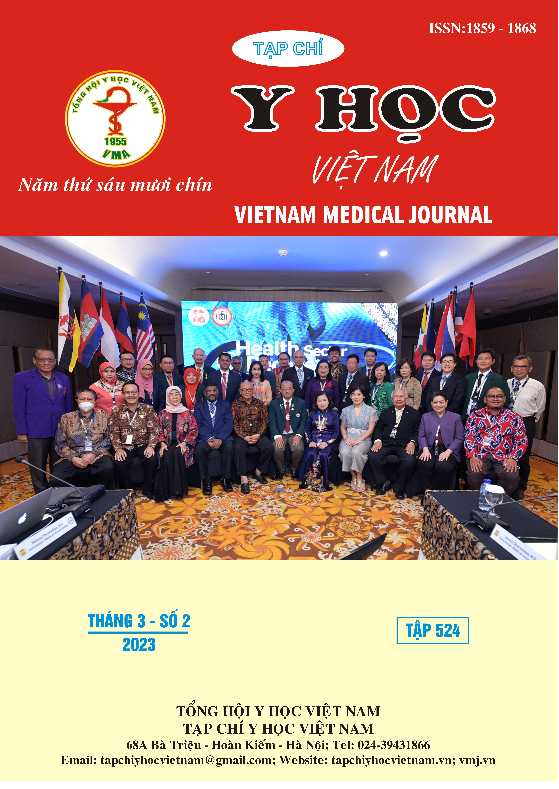IN VITRO ANTIOXIDANT ACTIVITIES OF LEAF EXTRACT OF MELASTOMA CANDIDUM D. DON USING DPPH AND ABTS METHODS
Main Article Content
Abstract
Oxidative stress is the process of generating free radicals including reactive oxygen and nitrogen species (ROS and RNS), which are linked to the development of diseases, including cancer, cardiovascular, and neurological diseases. The present study aims to determine the in vitro antioxidant activities of ethanolic crude extract and the fractions of Melastoma candidum D. Don leaf extract using DPPH and ABTS methods. The results showed that ethyl acetate fraction possessed the highest total phenolic content and total flavonoid content. Ethanolic crude extract and all of the fractions of chloroform, ethyl acetate, n-butanol, aqueous had in vitro antioxidant activities. In which, ethyl acetate fraction had the highest effect with IC50 of 15,34 ± 0,80 μg/mL using DPPH method (higher than that of acid ascorbic 4,38 ± 0,36 µg/ml) and IC50 of 4,49 ± 0,12 μg/mL using ABTS method (higher than that of acid ascorbic 2,39 ± 0,33 μg/mL). The M. candidum leaves possessed potential antioxidant activities that could be a promising source of natural antioxidant.
Article Details
Keywords
Melastoma candidum D., antioxidant, DPPH, ABTS.
References
2. Zheng, W., Ren, Y., Wu, M. et al. (2020), “A review of the traditional uses, phytochemistry and biological activities of the Melastoma genus”, Journal of Ethnopharmacology, 264: 113322.
3. Sridhar K., Linton A. (2019), “In vitro antioxidant activity of Kyoho grape extracts in DPPH and ABTS assays: Estimation methods for EC50 using advanced statistical programs”, Food Chemistry, 275(2): 41-49.
4. Nakamura M., Ra J. H., Jee Y. et al. (2017), “Impact of different partitioned solvents on chemical composition and bioavailability of Sasa quelpaertensis Nakai leaf extract”, Journal of Food and Drug Analysis, 25(2): 316–326.
5. Yang X., Yan F., Huang S. et al. (2014), “Antioxidant activities of fractions from longan pericarps”, Food Science and Biotechnology, 34(2): 341–345.


